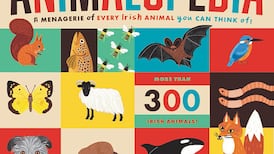How did the Chester Beatty Library persuade Bill Gates to send the Codex Leicesterto Ireland? Director Dr Michael Ryanexplains the process
Written late in Leonardo's life, the Codex Leicesteris an attempt to collate his theories about water, the reflection of light from it and aspects of the formation of the world. It deals with how certain colours are perceived and it mixes with all of this, advice on the management of waterways, the drainage of marshes and speculations about force and mechanics. It also lists potential chapter headings for the treatise on water which he never wrote and lists the propositions which he had arrived at while studying water.
Like the other Leonardo manuscripts, the Codex Leicesterwas inherited by Leonardo's favourite pupil, Francesco Melzi from whom it was somehow obtained by the Della Porta family, one of whom, a painter, sold it to the artist Guglielmo Ghezzi in Rome in 1690. In 1717 Ghezzi sold it to Thomas Coke, future Earl of Leicester, in whose family it remained until the 1980s when it was bought by Armand Hammer who promptly renamed it the Codex Hammer. In 1994 it was bought at auction in New York by Bill Gates who restored its traditional name. Through the generosity of Bill and Melinda Gates it is made available for exhibition annually. The manuscript consists of 18 sheets, each one folded in two to make a simple four-page notebook. The 72 pages of the manuscript are closely written in Leonardo's characteristic mirror script with occasional sketches and diagrams.
Leonardo was a man of his time who studied nature at first hand and read about it extensively. He consulted witnesses to phenomena which he had not himself seen and referred to them in his writings. He conducted experiments to explore his ideas - sometimes real experiments and sometimes, especially with his drawings of machines, through experiments.
He had to make his way in the world and so he had to find patrons. He promoted himself to potential employers as an engineer, especially of military works and the management of water, as much as an artist. War machines said to have been invented by Leonardo actually formed part of the stock in trade of a number of military engineers who are roughly contemporary with him and whose works were illustrated with ingenious mechanical devices.
He depended on many of the classical writers for his inspiration about nature and some of his most important observations in the Codex Leicesterabout the position of fossils in rocks high on mountainsides were anticipated by authors such as Herodotus who wrote in the 5th century BC. Seneca, for example, provided the basic idea of the circulation of waters through the earth which Leonardo elaborated in the Codex Leicester.
Leonardo was interested in mathematics and under the influence of his friend, Pacioli, became a competent geometer. Here, too, influences from far away may be seen because it was in the Islamic world that scholars had preserved the knowledge of Greek science in particular and over the centuries, retransmitted it to the West together with their own research. The impact of Arabic mathematics was especially profound, not only in the sciences and engineering but also in the development of new methods of financial accounting and credit transfer which enhanced the role of Italian banks in international affairs. To this day the numbers which we use in mathematics are Arabic numerals (with the probable exception of the "0" which may be an Indian invention) and words such as Algebra and Algorithm loudly proclaim their origin in Arabic.
The Chester Beatty Library has a fine collection of printed books, prints and drawings from the Renaissance to the 20th century, and is particularly rich in texts from the Islamic world on medicine, general science, mathematics and engineering. To look at the Codex Leicesterin a context which draws together some of the influences which are reflected in Leonardo's science was a natural fit for the Chester Beatty collections. We had been interested in exhibiting the Codex Leicester since the 1990s Bill Gates made it available for exhibition in Rome and then the wider world.
We began to think seriously about the exhibition in 2000 after the library's move to Dublin Castle was complete and applied to be considered as a venue for its display. We were greatly helped with contacts by a long time friend, Dr Marie Redmond of X Communications and, through her, by Anne Riordan, former CEO of Microsoft Ireland.
The exhibition of the Codex Leices teris managed by expert advisers and following preliminary contact with them, a formal case for the loan of the Codex Leicester was made in summer 2004, our facilities were examined to ensure that we had the capacity to display the manuscript safely and present it to the public in a fitting manner. While highly professional and rigorous, the process of examination was friendly and extremely supportive. The Codex Leicesteris fragile and only the highest standards of care are acceptable in its display - we had to convince the lenders that we could match the stringent criteria laid down. Because it may be displayed yearly it runs the risk of light damage. Accordingly, the sheets of the manuscript are displayed at low light levels and for limited periods of time. It is necessary to establish a regime of illumination followed by periods of comparative darkness in a manner which will enable visitors to the exhibition to view the pages comfortably while at the same time protecting them. Lighting design is crucial and complex. Switching the light systematically from sheet to sheet in a strict tempo is central to the success of the exhibition. The opportunity to show the codex has given us the chance to re-assess and improve our permanent exhibition. Four kiosks in the display will show a computer interactive programme made for the exhibition by X Communications. During the exhibition we will have a science trail, developed for children by CALMAST at the Waterford Institute of Technology.
To complement the Codexwe have chosen versions of a number of books which we know he owned or read, and some other texts to illustrate the general intellectual background of his time, as well as a selection of Islamic manuscripts from the library's collections covering topics as varied as astronomy, human anatomy, geography and medicine. My favourites are two pages from versions of a text by the Arab Al-Jazari who wrote an important treatise on machines powered by water. They are both in Persian translation, and one is from Mughal period India,has a colourful miniature which shows a princely pleasure boat powered by water. It is doubtful if it could ever have worked but it is a beautiful fantasy. We have added to the exhibition some East Asian Manuscripts from China and Japan which shed some light on the the development and the retardation of empirical science in China.
WE ARE ALSO including important Renaissance texts from Trinity College Library and from the Edward Worth Library housed in the former Dr Steeven's Hospital,and a Renaissance printed copy of Pliny the Elder's work from Cambridge University Library.It could be said of Leonardo as Isaac Newton said of himself, that to see further he stood on the shoulders of giants. He was not classically educated and he had to teach himself Latin so he could read many of the texts which interested him. But he was not hampered by an education based on preconceived ideas and he was able as a result to look at nature with no expectation of confirming an existing prejudice. The clarity of his vision in observing natural phenomena is testament as much to his innate abilities as to the rigorous training in draughtsmanship which he had obtained as a youth in the studio of Verrocchio in Florence. With the naked eye and the pen he achieved what nowadays we manage with slow-motion photography and computer modelling. Nowhere is this more true of his observations of eddies, currents and waves.
In our exhibition we can do no more than sketch some of the intellectual background on which Leonardo drew to expand and enrich his observations, but we hope to engage the audience in looking at this baffling, frustrating, immensely talented man and to see him not just as some kind of mystical icon but as a person of his times whose ideas and whose inventions were not capable of being fully realised in his day. His scientific work remains in the form of notes and sketches and is of a piece with his failure to complete many commissioned paintings. It is sad to reflect that he did not make his mark on science, and the brilliance of his mind and the importance of his observations of nature only became apparent with the publication of his notebooks in the 19th century long after others had laboured to explain the phenomena that had interested him.











